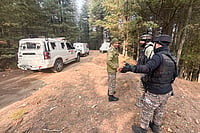As Sikh communities worldwide prepare to celebrate Guru Nanak Jayanti on Wednesday, November 5, 2025, the air in Gurdwaras will fill with the sound of Shabad Kirtan. This devotional music is more than just melody; it is the soul of the celebration, a way to connect with the divine through the sacred words of the Sikh Gurus.
What is Shabad Kirtan?
The word shabad means “word” or “divine hymn,” and kirtan means “singing in praise.” Shabad Kirtan refers to the singing of verses from the Guru Granth Sahib, the holy scripture of the Sikhs. These verses are seen not simply as poetry, but as the living Guru itself. When sung with devotion, the shabad becomes a way to experience God’s presence.
Roots in Guru Nanak’s Teachings
Guru Nanak (1469–1539) believed that music and poetry could help people rise above worldly distractions and focus on the oneness of God. His hymns were not written for performance but for meditation and spiritual growth. Later Sikh Gurus also composed poetry and gave instructions on which ragas (musical modes) the shabads should be sung in. The scripture eventually included not only the words of the Sikh Gurus, but also those of saints and poets like Kabir, Baba Farid, and Jayadeva, showing the spirit of inclusivity in Sikhism.
The Music of Shabads
Shabad Kirtan is usually sung by ragis (trained devotional singers) in the presence of the Guru Granth Sahib, whether in a gurdwara or at home. The style draws from North Indian classical music as well as Punjabi folk traditions. Harmonium, tabla, and string instruments like the dilruba or sarangi often accompany the singers. Unlike other devotional forms such as qawwali, Shabad Kirtan is calm and reflective, encouraging listeners to look inward.
An Introduction to Popular Shabads
For those new to Kirtan, certain shabads are particularly beloved and offer a beautiful entry point into this spiritual practice. Here are a few to listen to during Guru Nanak Jayanti:
Mool Mantar (Ik Onkar): This is the cornerstone of Sikh philosophy and the opening verse of the Guru Granth Sahib. Its recitation is a powerful affirmation of the oneness of God.
Aukhi Ghari Na Dekhan Deyi: A shabad of protection and faith, this hymn is a prayer asking the divine to shield the devotee from difficult times.
Tujh Bin Avar Na Jana: This beautiful verse expresses complete devotion, stating, "Without You, I know no other." It is a powerful expression of surrender to the divine.
Satgur Tumre Kaaj Savaare: A hymn of reassurance, it speaks of how the True Guru resolves the affairs of the devotee, bringing peace and success.
You can find beautiful renditions of these shabads on platforms like YouTube and Spotify to experience their calming power.
A Collective Experience
During Guru Nanak Jayanti, gurdwaras are filled with the sound of Shabad Kirtan. Devotees sit together, listen, and often join in softly. There is no clapping or cheering, as the focus is not on the singers but on the message of the words. Many quietly chant “Wahe Guru” under their breath, responding to the divine poetry rather than to musical skill. This creates a shared atmosphere of peace and devotion.
More Than Just Music
What makes Shabad Kirtan unique is that it is not entertainment—it is a spiritual practice. The hymns touch both heart and soul, helping people feel joy, calm, and closeness to God. Whether sung in the Golden Temple at Amritsar or in a small gurdwara abroad, the essence remains the same: to remember the divine through music.
Conclusion
On Guru Nanak Jayanti, Shabad Kirtan reminds devotees of the timeless message of Guru Nanak, that God is one and present in every word, every sound, and every heart. Through the simple act of singing together, Sikhs across the world celebrate not just their Guru’s birth, but also the eternal connection between music and devotion.























